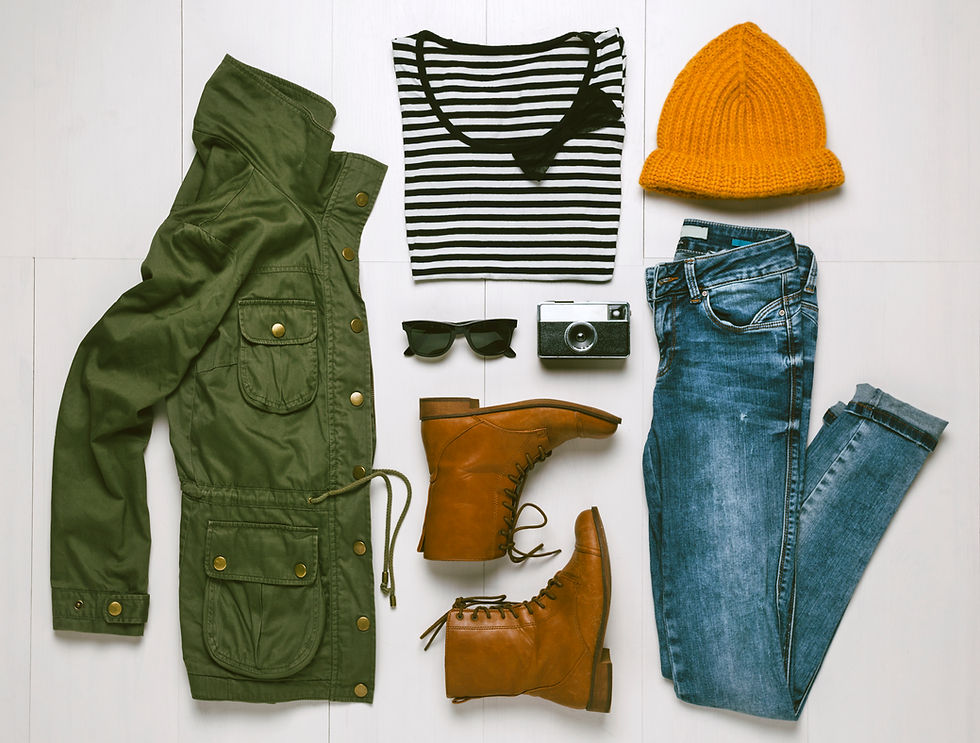
Do you know what wardrobe basics are? Your undergarments. Your underwear and bra. Or no bra. Or no underwear. It’s entirely up to you. Everything else is your actual wardrobe. There are many “ultimate” lists of wardrobe basics out there but if everyone one followed it wouldn’t we all look the same? How does dressing for your body type and personal style fit into this ultimate list we keep hearing about? They don’t.
These lists for example, consistently say that you must have t-shirts—crew neck and v-neck. Umm, it’s cool advice for maybe half of the population of women because it is versatile, but would a sophisticated woman wear one even under a blazer?? Could you picture your mom or grandmother rocking one? I don’t think mine would, even to the beach or for gardening to be honest. So why do so many stylists insist on this one-look-fits-all?
Or how about the classic peacoat? These can be very heavy and bulky if they are made out of heavy wool for petite women, they will get swallowed in them without the ability to bend their arms, plus we don’t all desire to look like we walked off an air craft carrier—do we?

Now that we have that cleared up, lets talk about what a wardrobe should consist of and what you need. A wardrobe should consist of undergarments, tops, bottoms, dresses, sweaters, outerwear (dusters, cardigans, blazers, etc.), jackets, coats, shoes and accessories. Each piece under each category should be selected based on your:
· Body type
· Body structure
· Body proportions
· Body particulars (whether they are strengths or challenges)
· Complementary colors
· The predominant lines of your face
· Personal style and
· Needs (how you spend your time and what you want to project)
Let’s break down your needs, as they could range from very casual weekends to the executive board room, they could include: hanging out at home, weekend farmer’s market and coffee, office job, happy hour with co-workers, business meetings, kids’ soccer, yoga instructor, Sunday brunch with friends, ladies night out etc. (I must admit, most of these are things of the past during the Pandemic, but someday soon we will enjoy the physical company of others outside of our pod… hang in there.).

Your needs require you to think about your wardrobe as 2-3 mini ones to accommodate how you spend your time. For example, you may need casual and comfortable clothes for the weekend and to run around with your kids—that’s wardrobe #1. You work in a office environment, so you need business casual outfits during the week—that’s wardrobe #2.

Now, let’s talk about what you want to project—how do you want others to see you. It’s easy to look frumpy on the weekends and look a little bit too casual for work but giving off the appearance that you put effort to looking your best says a lot about the person you are. Looking put together tells the world you care about yourself, that you are organized, motivated and have a positive disposition.
You’ve heard of the saying “dress for the job you want”—and this is so true, especially for women! But don’t do dress up to satisfy the expectation of others, do it because it makes you feel good, it lifts you up and brings you confidence. You want to project your intention, whether you are striving for a raise, promotion or just recognition of your work.

Okay, let’s bring this back to building your wardrobe. Keeping in mind your needs and dressing for your body, you will need to ensure that your closet contains: casual and business casual, solid and prints and several different fits and cuts from each of the clothing categories mentioned above. But a waaay more fun way to do this and create outfits at the same time is to build several capsule wardrobes, one for each of your major life activities (i.e., weekend and work). You can either keep adding to these capsule wardrobes or build additional mini wardrobes to expand and add variety (color palettes) to your wardrobe. We recommend reviewing our previous blog on building a capsule wardrobe.
You will need to think about each of these activities and your body, color, etc. as you select pieces from each category. So, for example, you are triangle-shaped with diagonal lines facial lines and your complementary colors are warm—therefore you would select silhouettes based on how you want to represent your body. Maybe on the weekends and in casual evening occasions you like to show off your curves so you select fitted shirt dresses, pencil skirts and “hip hugger” jeans , but for work you would rather look more balanced so you would select a business suit with dark straight leg trousers and a blazer with shoulder pads and a blouse with a boat neckline. The prints on your dresses and tops and accessories should have angular shapes. Your body structure (bony, muscular or rounded) will determine how fabric should drape on your body.
Capsule wardrobes maximize the utility of clothing pieces and your budget and is probably the most efficient (and fun) way to approach building a wardrobe that is tailored for you and your needs.
As you can see, a generic wardrobe basics list would completely miss the nuances of your body including your personal style.
Hire a Personal Stylist to teach you how to dress your body and curate a wardrobe that meets your needs, contact us now at info@thecloseteditco.com.
If you enjoyed reading this post please like, comment and share on your social media. Join our Facebook group to receive fashion tips and inspiration to dressing with confidence.

Comments